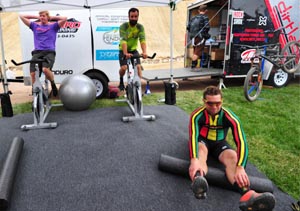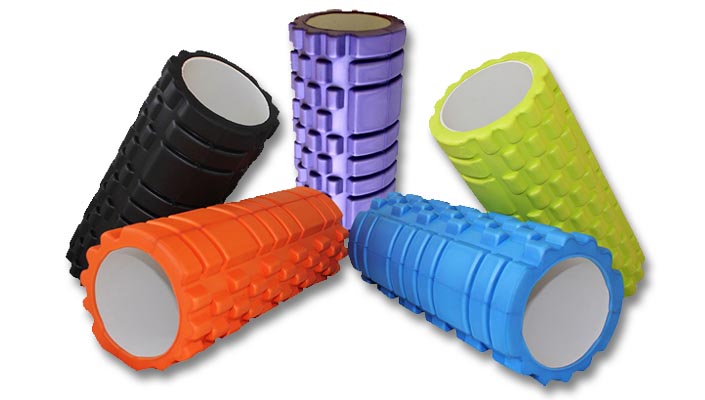
For fast recovery of stiff, sore muscles and a quick return to top riding condition, you need to get yourself on a roll!
Within the daily regimen of a pro cyclist there are a number of non-negotiables: hard specialized training, a clean diet, adequate hydration, plenty of sleep and - at least as important as all the others, maybe more so - proper recovery. Whether you are grinding up mountains and smashing out intervals every day or just commuting to work, training when you can and fitting in the occasional races with some friends, your body needs to recover. It sounds like a cliché, but think of your body as a machine. Do you know anybody smart enough to build a machine that could take the punishment you inflict upon your body? Think about it - you don't always give it the right nutrition, you probably aren't getting enough sleep, chances are that you don't stretch nearly enough... you get the idea. One thing that you can do to alleviate some of the aches and pains that creep up from continuous riding is to get regular massages. Can't afford it? Don't have the time?
Without the benefit of a full-time masseur like the pro riders enjoy, the next best thing for cyclists is self-massage with a foam roller. You've probably seen them in gyms or chiropractor offices: big cylindrical tubes made of hard foam that look like giant rolling pins. Once you get used to using them, rollers give you a great deal of control and allow you to identify and gently massage areas of soreness, trigger points, and knots, and by varying how much weight you apply you can moderate the intensity.
Massaging your muscles promotes circulation and muscle repair, reducing aches and stiffness and greatly speeding up recovery time. Reduced recovery time has two benefits: you feel better sooner, which is nice, and if you're a glutton for punishment it means you can get back into hard training sooner, which in turn means your cycling will improve more quickly.
If you can find just five minutes a day dedicated to self-massage with the foam roller you will definitely notice some positive results. There are two times of the day that seem to work best as far as fitting it into your routine:
1. Straight after your ride. Dismount, hang your bike up or put it wherever you store it, then get straight onto the roller.
2. When watching TV. That's right, you can multi-task. If you watch at least five minutes of TV a day then the roller isn't really costing you any time at all!
How to use a foam roller
Try pausing at any particularly sensitive points, maintaining the pressure but not overdoing it. You may have to spend a bit longer in certain areas, but eventually you'll be able to work those knots loose. Don't roll over your joints—this is massage for your muscles and the pressure could aggravate the tendons where the muscles connect to the bone.
Below is a routine that covers most of the muscle groups that cyclists will typically find sore. You won't be able to tackle them all in five minutes, so just do one or two areas then focus on another area the next day, and so on.
Calves
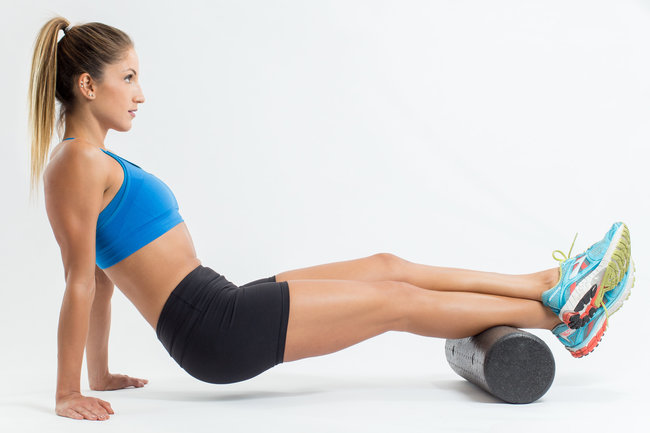
Start from heel end and raise your body off the ground. Roll up the calf 10cm (4 inches), then back 5cm (2 inches), then roll side to side. Repeat this process for the length of the muscle. Use other leg on top, or not, to provide as much extra pressure as you like. At pressure points or sensitive spots, hold and rotate your foot through its full range of motion, one way and then the other.
Hamstrings
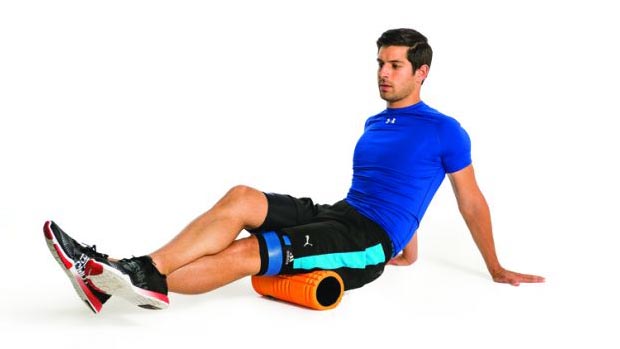
Start from the knee and keep your legs straight by extending through the inner heel. Work your way up the hamstring, rolling up and down and side to side to massage. Massage the full length of the hamstring—it doesn't matter if you overlap the glutes. Roll both legs at the same time or cross one leg on top of the other for more pressure.
Glutes and Piriformis

Roll both glutes (butt cheeks) together by sitting squarely on the roller. Make sure you apply pressure right up to the top of the muscle where it connects to the pelvis just before your lower back muscles. Stay off your spine, though.
For the gluteus medius (the side of your butt), tilt over on to one buttock and roll from the top edge of the pelvis right down to the bony outcrop of the thigh bone, called the greater trochanter.
The piriformis is a narrow muscle deep inside the buttock that helps rotate the leg. To find it, cross your leg over your knee and roll that buttock. Crossing your leg shortens the piriformis and provides the sensation when you apply pressure. Gently roll back and forth to massage.
Quads
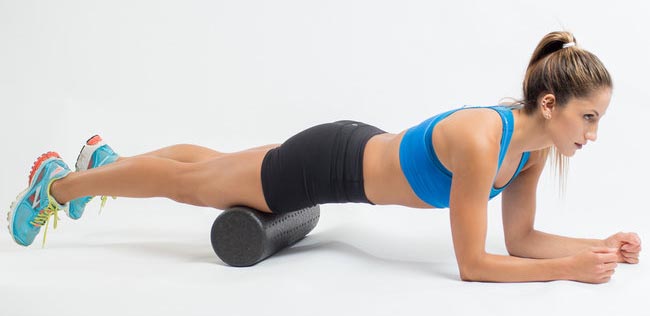
Start with the front of both legs on the roller, just above your knee caps. Have your toes splayed out for the first roll and move slowly up and back. Work right up to the hips to get the full extent of the muscle. For a second roll, have your big toes touching and your heels turned out while you roll the whole muscle up and back. You can also roll one leg at a time, going and rolling side to side to massage. You can also apply more pressure by stacking one leg on top of the other.
ITB (outer thigh)
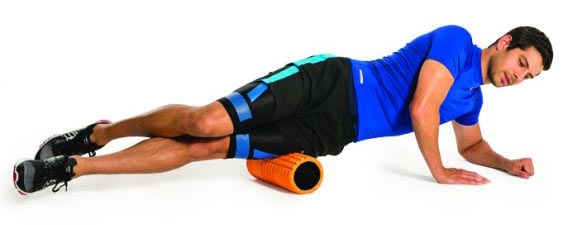
The Iliotibial band is a long band of tough connective tissue running down the outside of the thigh from the hip to the outside of the knee. It's often a site of niggling pain in bike riders, particularly at the knee, and it's a sensitive area to massage with the foam roller, so take it easy.
Start towards the top of the thigh and slowly roll forward and backward all the way along between the greater trochanter, that bony projection at the very top of your thigh bone, and the knee. Control how much weight you apply with your other leg and the arm you're balancing on.
Upper Back
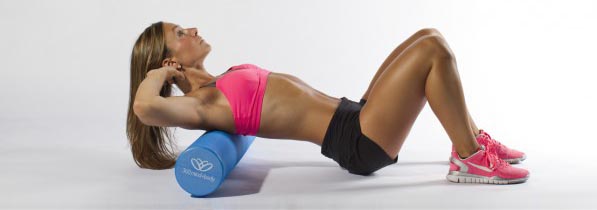
Place the middle of your shoulder blades on the roller and interlace your fingers behind your head. Lift to a plank position and hold your elbows high. Roll carefully from the base of your neck past your shoulder blades.
There you have it - a simple routine that will help your recovery and allow you to enjoy your time on the bike!
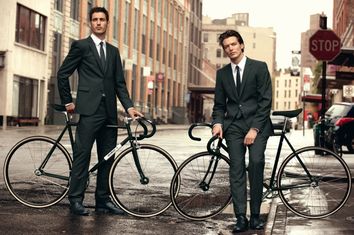
RELATED ARTICLE:
10 tips to fit cycling training around life
When it comes to improving the performance of your bike, very rarely is the term 'affordable' used. You may well be looking at thousands of schmackaroos for your new groupset, or in this instance, under $1,000 for a new set of upgraded wheels. This only applies to... READ MORE
